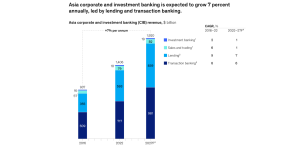As grim as the reality of a conflict in Ukraine may be, economically, it may serve as a major catalyst for Europe’s decarbonization efforts, forcing governments to invest in earnest in greater zero-emissions renewable energy sources and the electrification of cars and homes.
Doing so could secure energy independence from a Vladimir Putin-led Russia that’s proving to be a greater security threat by the day, say green-energy proponents and other global market-watchers.
“Much the same way the 1970s OPEC crisis sparked investment into renewable energy, and set forth new legislation mandating national fuel efficiency standards, this crisis may force Europe to invest at a much faster pace into distributed energy resources, renewables and demand-response technologies to secure its energy future,” said Peter Sobotka, founder and CEO of Corinex, a company specializing in making European energy distribution networks more efficient.
Distributed energy is typically decentralized, or harnassed right where it’s used, such as stationing wind and solar at an electric power plant. Demand-response technology helps consumers use energy during off-peak times.
Surging prices worsened by Russian reliance
Right now, Europe relies on Russia for around 40% of its natural gas
NG00,
a primary source to create electricity and heat and cool homes and other buildings. That supply could be constrained by Western sanctions on Russia or if Moscow retaliates by suspending sales, analysts say. It is also possible one of the pipelines bringing gas to Europe via Ukraine could be damaged amid hostilities.
Financial sanctions could further disrupt energy-market flows. President Joe Biden on Tuesday said the U.S. is sanctioning two Russian banks as well as making it difficult for the country to finance its sovereign debt, as he blamed Moscow for what he called the beginning of an outright invasion of Ukraine. More sanctions could follow.
“ ‘This crisis may force Europe to invest at a much faster pace into distributed energy resources, renewables and demand-response technologies to secure its energy future.’”
— Peter Sobotka, founder and CEO of Corinex
Prices for natural gas — which has been a major replacement for heavier-polluting coal in running electrical grids and for directly heating homes — nearly tripled last year after demand spiked following the end of COVID-19 pandemic lockdowns. By some accounts, that alone plunged Europe into its most severe energy crisis since the 1970s.
The International Energy Agency said Russia had already worsened the situation by deliberately squeezing gas exports. Now, the heightened military conflict in Ukraine, which the latest U.S. intelligence says may be imminent after some Russia-backed regions have already gone rogue, could choke supply even further.
Read: What war in Ukraine would mean for markets as Putin orders Russian troops to separatist regions
And: Russia’s move into Ukraine is boosting commodity prices — here’s what’s at stake
Analysts also stressed that the fast-changing situation was producing uncertainty more than anything.
“European leaders might feel compelled to cut off imports of natural gas and oil
BRN00,
from Russia, despite the very serious economic pain which this would entail. Putin could, of course, turn off the energy tap himself in reaction to Western sanctions,” said David Kelly, chief global strategist at JPMorgan Asset Management, in a commentary.
“However, in either case, the long-term consequences for Russia would be very severe as Europeans would likely, belatedly, resolve to never again make themselves energy dependent on the whims of a Russian leader,” Kelly said.
Already, Germany has tapped the brakes on a new gas pipeline from Russia this week after Moscow formally recognized the two breakaway regions in eastern Ukraine. Nord Stream 2 as it’s called is designed to double the amount of gas flowing from Russia straight to Germany on the bed of the Baltic Sea, bypassing traditional transit nation Ukraine,
Russian gas cannot be easily replaced
Doubling down on renewables would help reduce dependency on Russian gas, European Union Energy Commissioner Kadri Simson said Monday, but she reiterated that energy security was critical. An advisory group to coordinate the E.U.’s gas supply security met Tuesday because “it’s important that contingency plans are ready for the worst-case scenario,” she said.
Could Europe replace a portion with its own natural gas, at least for now? Many analysts see this as an uphill climb and not very timely given the immediate geopolitical crisis.
Norway, Europe’s second largest supplier after Russia, is already operating at maximum capacity. One short-term fix is to seek out liquefied natural gas (LNG) — because it can be transported great distances by ship — from major producers like the U.S., Qatar, Algeria and elsewhere until renewables catch up. But Europe’s existing LNG terminals have limited available capacity to absorb extra supply.
“We stand ready to look at options to be able to bring some of the unparalleled LNG scale that we have globally to be able to supply Europe as and when we can,” said Shell’s
SHEL,
head of integrated gas, Wael Sawan, at the launch of the company’s latest annual LNG market outlook.
“But it’s important to recognize that it is an incredibly tight supply-demand market at the moment, and so those cargoes are not freely available,” he said.
Between low reserves, long timelines for new projects and the E.U.’s overarching green-energy ambitions, at which it’s been a world leader, it appears all but impossible for Europe to significantly restore its own natural gas production.
“‘Coal remains a critical component of the power mix, especially when the reliability of other sources of energy is called into question, and that is unlikely to change in the immediate future.’”
— Carlos Torres Diaz of Rystad Energy
In the U.S. in particular, but also in some European climate-change policy efforts, natural gas is being pushed to play a role in the shift to renewables, especially as some nations who continue to burn coal need a ready replacement.
Perhaps even more controversial than clinging to gas, Europe could partially re-activate recently decommissioned coal plants — although undermining its emissions goals in the process — as well as nuclear plants. A Wood Mackenzie report says doing so would provide at best about 10% of the electricity currently generated by natural gas.
“European countries have been gradually decommissioning coal infrastructure over recent years, as the power market moves towards a greener, less carbon-heavy future. However, as the regional energy crisis shows, coal remains a critical component of the power mix, especially when the reliability of other sources of energy is called into question, and that is unlikely to change in the immediate future,” said Carlos Torres Diaz, head of gas and power markets research at Rystad Energy.
If natural gas prices remain high or the Russia-Ukraine conflict results in a significant drop in gas-fired generation in 2022, Europe could turn to coal make up the shortfall. Despite decommissioning infrastructure, coal power generation remains the most flexible option, he said.
Still, environmentalists and European policy-makers who have worked for years on the climate agenda fear that making coal even a short-term priority to fulfill needs could set back Europe’s goals to move away from fossil fuels. The E.U. has said that to meet its 2030 climate change target of cutting emissions in half, it expects to reduce its natural gas consumption by more than 25% compared with 2015 levels.
“‘If we really want to stop long-term making Putin very rich, we have to invest in renewables and we need to do it quickly.’”
— E.U.’s climate chief Frans Timmermans
Already, many countries across Europe generate around a third to a quarter of their electricity from wind and solar
ICLN,
: Ireland (35%), Germany (33%), United Kingdom (29%), Spain (29%), Greece (27%) and Portugal (26%).
No matter the timeframe, climate advocates say cutting Europe’s dependence on natural gas means scaling up renewable energy as fast as possible for electricity production, as well as updating buildings to use clean heating technologies like heat pumps and increasing energy efficiency.
Another “ray of hope” toward energy independence comes in the form of nuclear generation, which rose by 6% in 2021 compared with 2020, Torres Diaz said. Nuclear, which has other risks but runs relatively cleanly, has been the largest contributor to electricity generation in Europe since 2014. Dark clouds may be on the horizon, highlighted by France’s EDF last week downgrading its expected nuclear output in 2022 and 2023.
The CEO of Portuguese utility EDP also linked the rapid adoption of renewables to Europe’s energy independence, telling CNBC last week that investment in the sector needed to be “much faster.”
“These are [indigenous] … resources: wind, solar,” said Miguel Stilwell de Andrade, who was speaking to “Squawk Box Europe. “So we would become less dependent on external sources of energy, whether it’s gas or coal.”
Perhaps no one has been as clear as the E.U.’s climate chief, who had his eyes on Russia well before even the latest threat.
“If we really want to stop long-term making Putin very rich, we have to invest in renewables and we need to do it quickly,” Frans Timmermans said in January. “If you really want to make sure that you can provide stable, affordable energy to your citizens, renewables is the answer.”
This post was originally published on Market Watch





